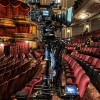3D printed Ergo kb parts: SLA vs. FDM?
Hi All,
I’m planning to print a plate & case for a handwired 46-key split kb. I have access to both SLA & FDM printers at a fab lab, so wondering which printer tech would be best to print various parts such as keycaps, plate, case etc. Function’s more important than looks for me.
I’m allowed to use PLA or TPU for the FDM, and the default resin (ABS-like?) for SLA.
I’m thinking:
- Keycaps: SLA (I want really thin keycaps)
- Plate: ?? (not sure what’s better for a thin & durable plate that allows a bit of flex when typing)
- Case: FDM (Due to costs, and easy to embed screws & magnets)
- Wrist rest (if any): FDM? Would TPU wrist rest be clean or comfortable?
- Gaskets, extra layers (if any): FDM (cuz TPU)
What do you think?



Add comment